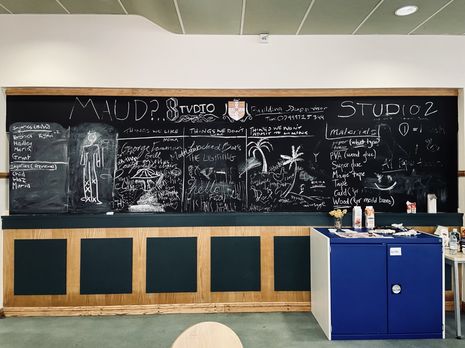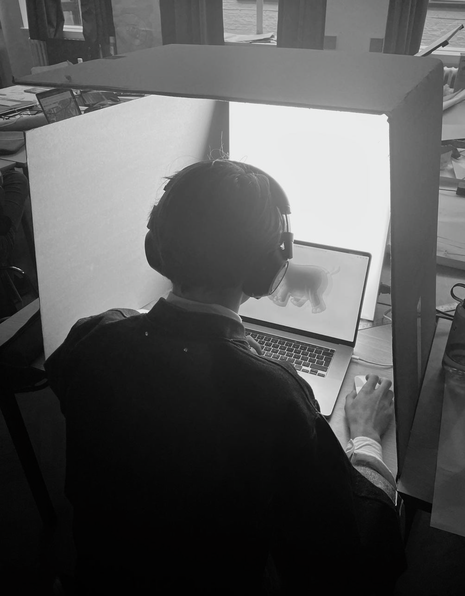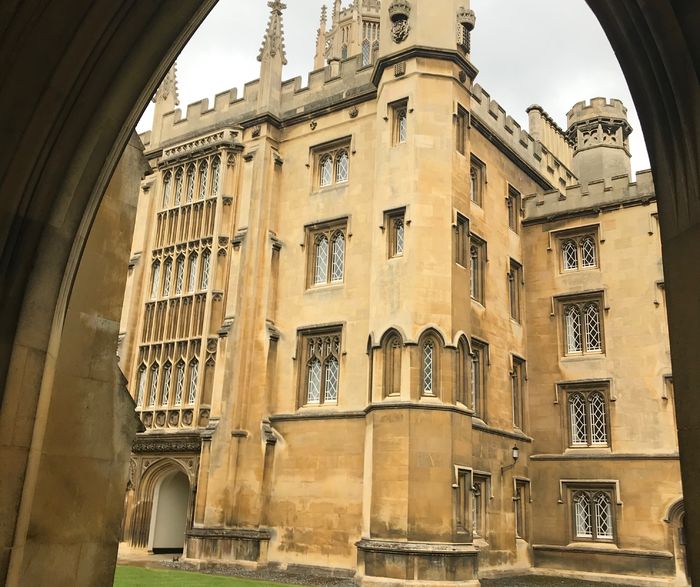Architecture’s rubbish building
Through the lens of its uninspiring second-year studio, Reuben Brown elucidates the unique strengths and difficulties of Cambridge’s architecture department

Cambridge is a town of famous, and sometimes truly wonderful, study spaces. The central reading room at the University Library, the Union’s newly-refreshed Keynes Library, and Fitzwilliam College’s modest yet delightful tower are a few of my favourites.
It might come as a surprise, then, to learn that in architecture, ironically, masters students and second year undergraduates are beginning their third term working from a building that feels like the function room in the back of a small church.
"The department could say that it doesn’t matter the kind of place we work, only that we have somewhere to do it"
The new Mill Lane ‘Studios’ occupy the former University Sports and Social Club: condemned (or perhaps commended) by this paper in 2013 for its one-star food hygiene rating. The Mauds (Masters of Architecture and Urban Design students), hailing from the Ivy League and Cambridge’s top domestic competitors, were more than a little surprised by the dark former-canteen they arrived at in October, while we second years at least get big windows to accompany the uncomfortable chairs. For a long time, the best printer the department could offer us was limited to monochrome sheets of A4; great for printing an essay, but somewhat useless for the laboriously-detailed survey drawings architecture students are graded on. To put those on paper, we walk ten minutes down the road to Scroope Terrace, peering with jealousy into the bespoke studio building promised to us when we applied to this course, now populated only by first and third years.

It’s a tricky situation, and a bit of a contradiction. Current second years, driven a little mad by drawing alone in our rooms all first year, have now been annexed to a building which isn’t fit for purpose. The department could say that it doesn’t matter the kind of place we work, only that we have somewhere to do it — in which case the very premise of our degree is void — or they can acknowledge that what we’re studying does matter, and that a room designed as a social club might need some adaptation to make it a productive place to study.
Either way, many students dislike Mill Lane and consequently rarely come in. In the winter, my own effort to resist the building’s assorted distractions involved constructing a cardboard cubicle over my desk with a big lightbox pointed at my face. I dubbed it the S.A.D. Cave.
But it would be far from fair to suggest that the Department doesn’t realise this is a problem, or to suggest that the problem is primarily their fault. In reality, blame seems to lie with the University, and some simple economics.
Among the architecture faculty there is a sense that Cambridge University likes things to be humanities or STEM, not something in between. Reminiscent of the hackneyed personal statement opener ‘architecture marries my passions for art and maths’, the University doesn’t quite seem to recognise that the field is neither maths nor art; neither purely rational nor romantic, but a complex method of social critique, whose final output is the design of a viable alternative.
"It is the Cambridge department’s intimate scale and character[...]that has made it such a thoughtful and social place to study"
Perhaps as a result of this confused identity, Cambridge’s architecture offering has long existed in a kind of paradox as the U.K.’s best architecture degree, and one of its most under-resourced. We have no proper workshop, no digital fabrication lab, and work in the hand-me-down buildings of defunct University societies, rather than the high-end facilities enjoyed by the students of the Architectural Association, Bath, U.C.L., or even former-polytechnic Westminster. When research funding was cut in 2005, the department was nearly closed.
Nonetheless this seemingly impossible position has been maintained through a simple, classically-Cambridge approach of small group, world-class teaching; we study a broad, critical, and challenging theoretical curriculum, matched by an equally rigorous design component. Cambridge has never produced a starchitect, perhaps because the course teaches you the obvious thing: starchitects’ pioneering visions often come at a profound human and environmental cost.
But there’s no hiding from the fact that architecture is expensive, to build and to study, and that prospective students shouldn’t have to choose between outstanding teaching and outstanding facilities. So what’s the solution?
This is the question current department leadership think they can solve, through a broad-restructuring of almost every course on offer.
To get more money from the University, student numbers are set to double. Currently the university's second-most competitive undergraduate degree, this isn’t a demand problem; the question is, where do you put everyone? The answer so far is a defunct social hall without a working printer, but this is the middle phase of an awkward transition compounded by the pandemic.
From 2024, half of the larger 90-student intake will study a four-year Masters of Design course — Cambridge’s first new tripos in decades, which brings arts and science together in one degree. Now you’re talking the University’s language. Meanwhile, Mauds will graduate with a standard Masters of Architecture. In return, the Engineering Department will give Architecture its Dyson Building (complete with the Dyson Room ‘supported by James Dyson and the James Dyson Foundation’ - an un-ironic version of Marc by Marc Jacobs for Marc Jacobs in collaboration with Marc…).
The fruits are starting to show: in the first week of term I attended the ribbon-cutting ceremony of the new Digital Fabrication Lab in the Dyson’s ground floor. Only made possible by this restructuring, it’s a resource that sparks great excitement, and brings Cambridge up to spec with what’s on offer elsewhere.
But in trying to compete with those schools, Cambridge should be wary not to become them. It is the Cambridge department’s intimate scale and character, alongside the fantastic role of its student society, ARCSOC, that has made it such a thoughtful and social place to study, and has kept me married to this degree through periods of doubt. My friends at the Bartlett and the Architectural Association, meanwhile, separated from other year groups and studio units, bemoan their schools’ lack of student agency and cohesion.
Because, despite its shoddiness and its rubbish buildings, what the Cambridge Architecture Department has is unique, and truly special. As the school expands, every effort should be made to preserve it.
 News / Cambridge bus strikes continue into new year16 January 2026
News / Cambridge bus strikes continue into new year16 January 2026 News / Uni members slam ‘totalitarian’ recommendation to stop vet course 15 January 2026
News / Uni members slam ‘totalitarian’ recommendation to stop vet course 15 January 2026 Science / Why smart students keep failing to quit smoking15 January 2026
Science / Why smart students keep failing to quit smoking15 January 2026 Interviews / The Cambridge Cupid: what’s the secret to a great date?14 January 2026
Interviews / The Cambridge Cupid: what’s the secret to a great date?14 January 2026 Comment / Will the town and gown divide ever truly be resolved?12 January 2026
Comment / Will the town and gown divide ever truly be resolved?12 January 2026









